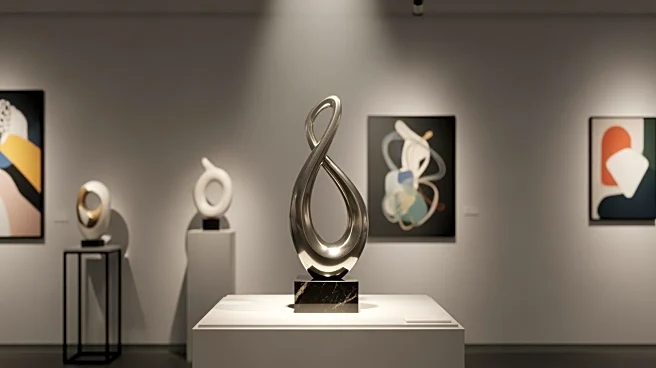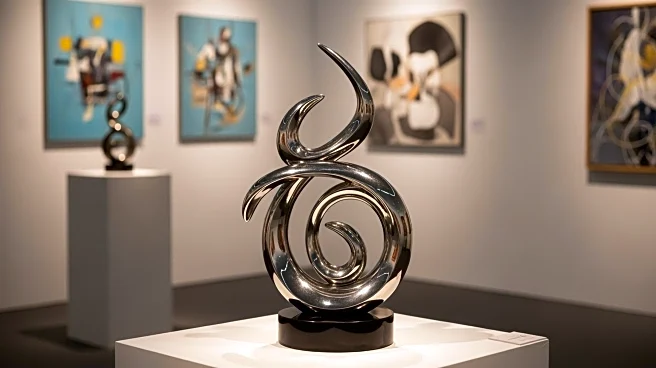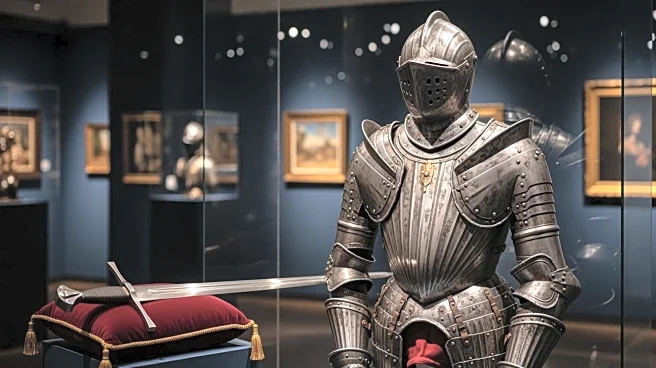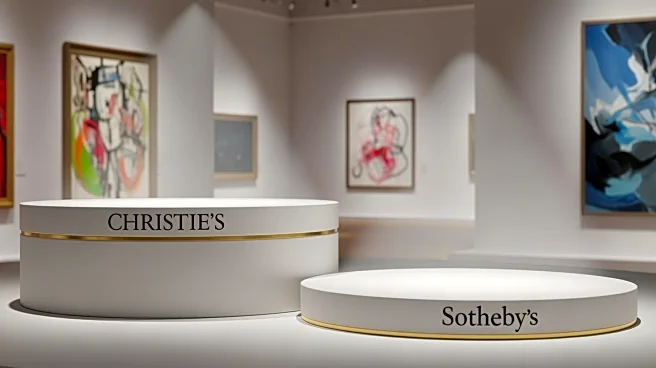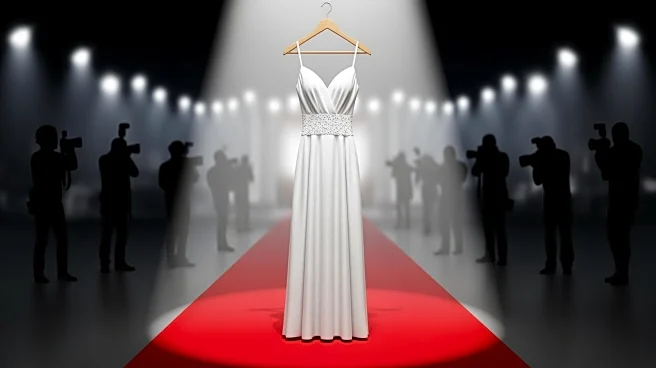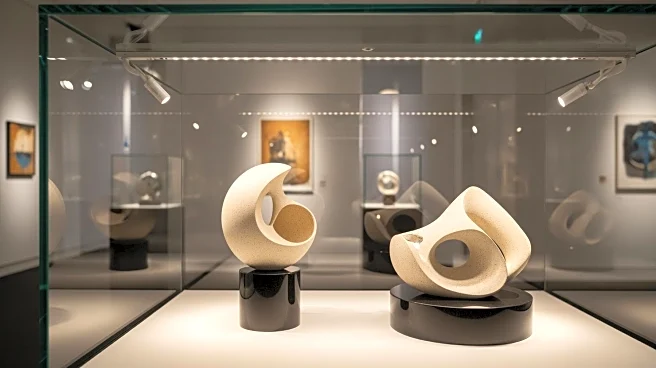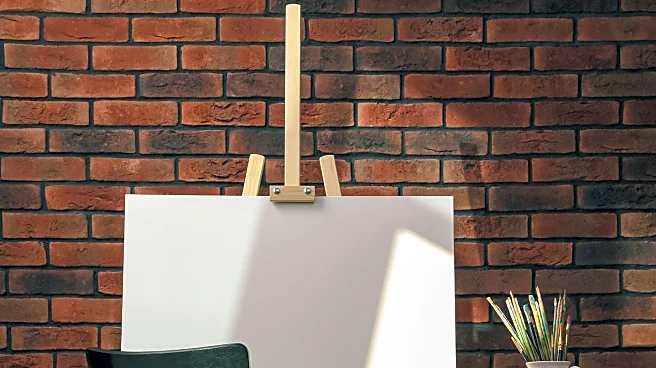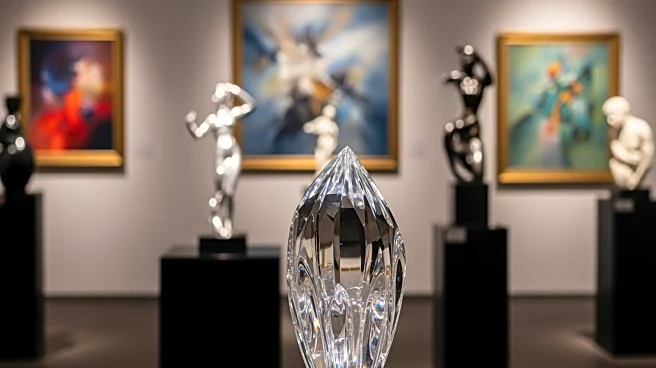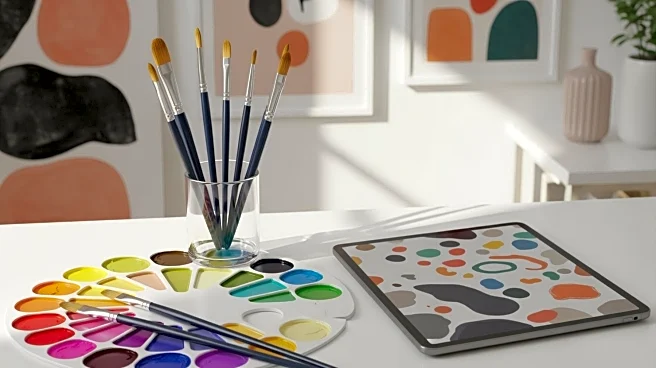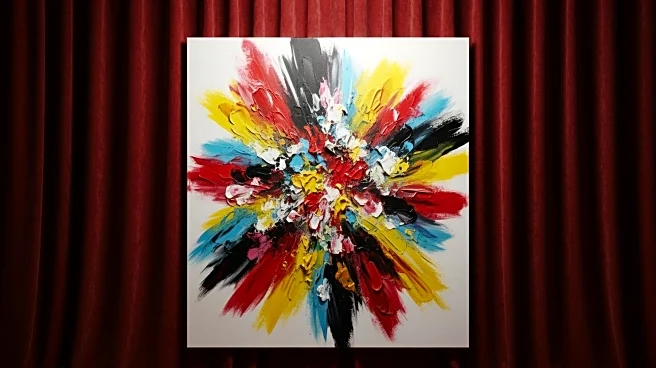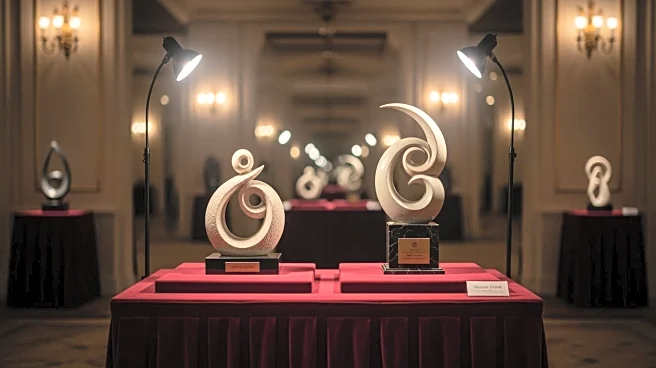What's Happening?
The Pavilion of Art and Design (PAD) in Mayfair's Berkeley Square has experienced a surge in sales activity, indicating a healthy state for the limited-edition design sector. On the first day of the event,
sales commenced rapidly, with many booths selling a significant portion of their displayed works. Notable sales included high-value items such as jewels at Glenn Spiro and a collectible Judas table by Danish designer Finn Juhl. The event attracted a well-heeled crowd, eager to acquire unique design pieces, including a bar cart at Rose Uniacke, which sold immediately. The show features a diverse range of design works, from Maurice Marty's large sofa to Alvar Aalto's Scandinavian furniture, showcasing the breadth and appeal of contemporary and historical design.
Why It's Important?
The strong sales at PAD highlight the ongoing demand and appreciation for high-quality, limited-edition design pieces. This trend suggests a robust market for art and design, which can have positive implications for designers, galleries, and collectors. The event's success reflects the economic vitality within the design sector, potentially encouraging further investment and innovation. As collectors continue to seek unique and valuable pieces, designers and galleries may benefit from increased visibility and sales opportunities, fostering growth and creativity in the industry.
What's Next?
The success of PAD may lead to increased interest and participation in future design events, both domestically and internationally. Galleries and designers might explore new collaborations and expand their offerings to meet the growing demand for unique design pieces. Additionally, the event's outcomes could influence market trends, encouraging more collectors to invest in limited-edition designs. As the design sector continues to thrive, stakeholders may focus on enhancing the accessibility and appeal of their works to attract a broader audience.
Beyond the Headlines
The event underscores the cultural significance of design as both an art form and a commercial enterprise. It highlights the evolving tastes and preferences of collectors, who are increasingly valuing craftsmanship and historical significance. This shift may lead to a reevaluation of design's role in cultural heritage and its impact on contemporary aesthetics. Furthermore, the event's success could inspire designers to push the boundaries of creativity, exploring new materials and techniques to create innovative and meaningful works.
